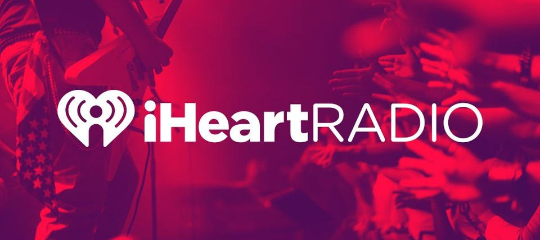
- Blog
- Dec 14, 2021
- By Cam Sivesind
As we compile our predictions of performance marketing trends for 2022, it’s always good to look back at our trends piece for 2021 to see how we did.
Other than making TOO MANY predictions – 9 of them – we think we hit the mark on most, if not all of them. Most marketers thought 2021 would be “the year after a messy 2020,” but as it turns out, 2021 was just as much of a mess, with the continuation of the pandemic, political upheaval, natural disasters, and more.
Here’s our 2021 list, and our assessment of our predictions:
1. Third-Party Cookies are Being Restricted; Apple’s Consumer Opt-in Changing the Landscape
The terms “third-party cookies” and “cookie deprecation” couldn’t have been uttered or written about more in 2021. If marketers and advertisers learned nothing else from 2021, it is that first-party data is essential, and meeting consumer data privacy standards – internal or external – is key. But consumers still like to be treated to a quality customer experience from businesses they trust.
This “trend” will continue into 2022 and beyond as the MarTech and AdTech industries continue to manage through a shifting landscape so marketers and advertisers can do what they do – and be profitable – and consumers get what they want, when and how they want it.
2. Collaborative Marketing and Attribution for Ecosystems
We saw this firsthand as we introduced the concept of ecosystem attribution, an offshoot of impartial multi-touch attribution. Ecosystem attribution – in which a pixel placed by the marketplace on its website, as well as by each of its partners making the final sale – provides a lens into which marketing channels are most effective. We have very content customers who were happy to show advertisers in their network just how their ad dollars worked for them and led to conversions at the end of the customer journey.
It’s all about collaborative marketing, and nowhere was that more prevalent than in ecosystems consisting of marketplaces – network owners collaborating with their end-of-the-line partners to promote, advertise, and sell goods and services.
3. Ad Networks Will Continue to Buy Up CDPs
Growth and revenue in the CDP industry exploded in 2021. While consolidation was a fact of life for businesses – agencies, MarTech and AdTech companies, etc. – Customer Data Platforms (CDPs) were no exception. Heck, even Facebook became a separate company under the new Meta brand.
Credit the increasing reliance on first-party data for the upward trend. As we said in our 2021 prediction piece: “By combining customer information from a CDP with the reach of ad platforms and DSPs, marketers can launch audience-specific campaigns driven by data. Insights from attribution data will be key to driving marketing performance.”
4. Meteoric Growth of Podcasts and OTT Won’t Slow Down
Here’s what we said in our prediction piece: “The rocketing growth of podcast and over-the-top (OTT) channels will continue in 2021, meaning marketers will need to meet consumers where they are and measure the impacts of advertising on those channels. OTT and podcast providers are seeing their ad inventories being gobbled up as the demand for their programming continues to increase.”
We saw more and more customers look to us to measure their podcast advertising effectiveness – not in the way point solutions do, but as part of an omnichannel measurement approach. Advertisers continue to demand proof of performance on ALL channels – online and offline. Watch for news from us in 2022 about OTT attribution, which we do already, but we’re always tweaking and improving.
5. Web Lift Alone Won’t Cut It Anymore for Radio and TV Advertising
Much like podcasting (see #4) requires measurement along with all other marketing channels, savvy radio broadcasters continue to succeed by embracing multitouch attribution (MTA) and educating their sales teams to its powerful insights – as all major U.S. broadcasters have.
The value in showing advertisers “what happened after their radio ad created consumer awareness” on their way to conversion is solid gold. Look to more radio advertisers demanding MTA measurement – not just point solution, single-channel-focused attribution – and putting its data and insights to use.
6. 2020’s COVID-19 Disruption Proves Businesses Need D2C Strategy to Survive in 2021
What we said in our 2021 piece: “Asleep no more, businesses who want to thrive, not just survive, in 2021 will need to embrace a direct-to-consumer mindset and marketing strategy.” We may have been optimistic here. While 2020 indeed woke up a lot of businesses to refine their marketing strategy, 2021 just poured more fuel on the fire. And from the looks of it, 2022 is going to be year three of finding creative ways to use and manage data and analytics to increase marketing performance.
7. Incrementality – A Great Idea in a Vacuum; Very Difficult in Practice
In 2021, despite those selling incrementality insisting otherwise, only those with lots and lots of resources – think P&G or Unilever – had a chance of making incrementality work. Your average marketer just can’t stop marketing on one channel to set up a control group to see if the channel is indeed working. Martha Dubicki, VP of Client Services at Rakuten Advertising, had this to say at a co-presentation by her and LeadsRx CEO AJ Brown at an early October PDMI West session:
“Incrementality: I feel like everyone’s expecting a magic bullet and everyone’s expecting a definition that is the same. But advertisers all have their different view of incrementality. I would say that tale is old as time, is you know what will happen. For instance, if I turn off my brand keyword search, will customers just go direct? Will those customers be as valuable as they were when I had my branded terms front and center with a Google ad? So we’ve done this many times and every single time that we study what happens if branded terms are turned off; does SEO, does direct pick up the slack? The answer is, potentially via traffic but not via conversion.”
8. Point Solutions Will Likely Become Free Tools
While some point solutions went away completely, there are still tools out there that measure ONE channel and provide data of how that ONE channel is performing. We reiterate what we said in our 2021 trends piece: “Warning: If you rely on separate tools to measure separate channels, you are by definition not seeing the big picture, and your insights are compromised.” It’s why multi-touch attribution and customer journey analytics vendors measure all channels to see a complete omni-channel picture of their customers’ marketing efforts.
9. More Vendors Will Offer Bolt-on Attribution Solutions
Just like consolidation occurred in the CDP industry, much consolidation took place in the MarTech industry. Larger vendors gobbled up smaller ones and, in some cases, smaller vendors took the lead and absorbed larger outfits. The lines between MarTech and AdTech blurred in some cases. Expect this bolt-on strategy from more and more vendors in 2022, as their clients demand attribution to measure their advertising effectiveness.
Our warning from our prediction piece a year ago still stands: “Just remember, it’s not their niche and rather an attempt to join the attribution party and appease clients thirsty for the data they want and need. You will get what you pay for.”
Many of our predictions for 2021 will continue into an uncertain 2022. No matter what the New Year throws our way, you can always rely on marketing analytics, data, and insights to point the way to increased marketing performance. Watch for our 2022 performance marketing trends prediction blog post coming soon.





